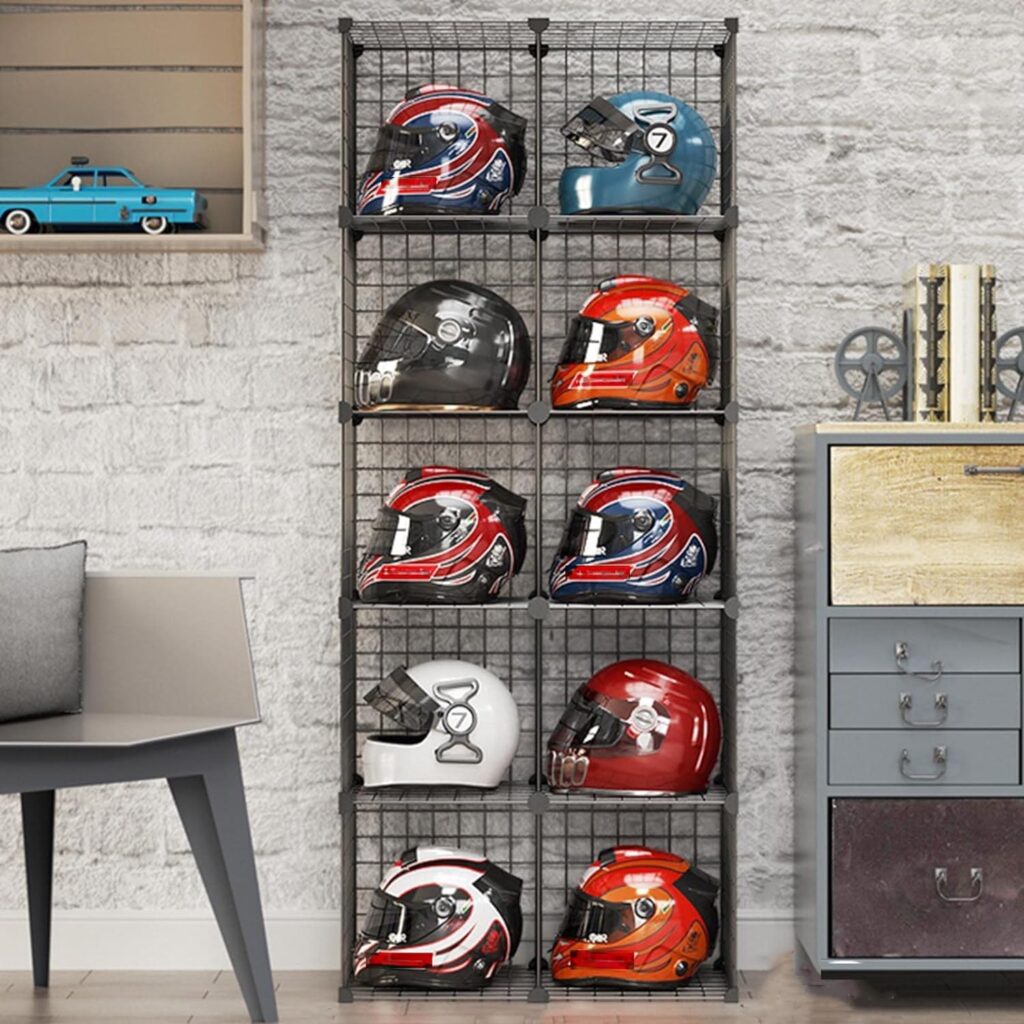Storing Mountain Bike Helmets: A Master Cyclist’s Guide for Optimal Care

Key Point Summary of Storing Mountain Bike Helmets:
- Proper Storage Practices: Essential tips for storing MTB helmets effectively.
- Helmet Care and Maintenance: Keeping your helmet in top condition to ensure safety.
- Avoiding Common Storage Mistakes: Understanding what not to do when storing MTB helmets.
As a seasoned cyclist with a wealth of experience in racing and riding various bikes – from the adrenaline-fueled mountain bike trails to the rugged gravel and technical cyclocross courses – I’ve learned that taking care of your cycling gear, especially your helmet, is just as important as the ride itself. Storing MTB helmets properly is crucial for maintaining its integrity and ensuring it’s always ready for your next adventure. In this article, aimed at beginner to mid-level cyclists, I’ll share my insights on helmet care and storage, sprinkled with a few personal anecdotes that have shaped my approach over the years.
Proper Storage Practices
After a challenging ride, it’s tempting to just toss your helmet aside. However, how you store it can significantly affect its lifespan and performance. I learned this the hard way when my first MTB helmet, which I casually hung on my bike’s handlebars, fell and cracked. A helmet should be stored in a cool, dry place, away from direct sunlight and extreme temperatures. UV rays and heat can degrade the materials, compromising its protective capabilities. I prefer hanging mine on a dedicated hook in my garage, away from windows and heat sources.
Helmet Care and Maintenance
Regular cleaning is essential. After a muddy trail ride, I always gently clean my helmet with mild soap and water, focusing on the vents and padding. This not only keeps it looking good but also prevents the build-up of sweat, dirt, and bacteria. Be wary of using harsh chemicals or solvents, as they can damage the helmet’s materials. Another key aspect of helmet care is regular inspection. Check for any signs of wear, cracks, or damage, especially after a fall. Even minor impacts can compromise its structure.
Avoiding Common Storage Mistakes
One common mistake is storing MTB helmets in a car or a damp shed. The fluctuating temperatures and humidity can weaken the helmet’s structure. Also, avoid hanging it on a handlebar or placing heavy objects on it, which can distort its shape and effectiveness. I once had to replace a helmet because I’d habitually left it under my cycling gear, which warped its shape over time.
When to Replace Your Helmet
Conventional wisdom suggests replacing your helmet every three to five years, depending on usage. However, if it sustains an impact, it’s time for a new one, even if there’s no visible damage. I’ve replaced helmets after significant crashes, knowing that their protective qualities might be compromised. It’s a small price to pay for safety.
Personal Storage Solutions
I’ve found a few storage solutions that work well for me. A helmet bag or case, especially for travel, protects it from scratches and dust. At home, a dedicated storage spot, like a shelf or a cabinet, keeps it safe and out of the way. I also occasionally use a helmet liner or cover when storing it for an extended period, which helps keep it clean and dust-free.

The Role of Helmet Storage in Overall Gear Care
Storing MTB helmet properly is part of a broader approach to taking care of your cycling gear. It ensures that your equipment is always ready to perform when you need it. This approach extends to all your gear – from your bike to your shoes and clothing. Proper care and storage can significantly extend the life of your gear, saving you money and hassle in the long run.
FAQ
What is the shelf life of MTB helmet?
The shelf life of an MTB (Mountain Bike) helmet is typically 3 to 5 years from the date of manufacture, depending on the manufacturer’s recommendations and the helmet’s exposure to wear and tear.
Where should I store my helmet?
Store your helmet in a cool, dry place, away from direct sunlight and extreme temperatures, to maintain its integrity and prolong its lifespan. Avoid places with high humidity or where it might be exposed to chemicals or fumes.
Where should helmets not be stored?
Helmets should not be stored in high-humidity areas, direct sunlight, extreme temperatures, or near chemicals. Avoid places like a car, a damp garage, or hanging on a bike’s handlebars, as these conditions can degrade the helmet’s materials.
How do you store a bike helmet?
Store a bike helmet in a cool, dry place away from direct sunlight and extreme temperatures. Hang it on a hook or place it on a shelf, ensuring it’s not compressed under heavy objects. Avoid exposing it to chemicals or damp conditions.
There are several manufacturers and retailers, both online and offline, where you can find helmet hooks, mounts, or storage solutions for helmets. Some of these include:
- Amazon: A vast online marketplace offering a wide range of helmet storage options from various brands.
- Home Depot: Known for home improvement supplies, they also stock various hooks and mounts suitable for helmet storage.
- IKEA: Offers a variety of wall hooks and storage solutions that can be repurposed for helmet storage.
- Walmart: A large retailer with both physical stores and an online presence, offering a selection of hooks and helmet storage options.
- REI: Specializes in outdoor and sports equipment, including storage solutions for cycling gear.
- Etsy: Features unique, handmade helmet storage solutions from various independent sellers.
- Lowes: Similar to Home Depot, they offer a range of hardware supplies that can be used for helmet mounting.
- Pro Bike Tool: Known for cycling accessories, they offer specific products designed for bike and helmet storage.
- Delta Cycle: Offers a range of bike storage solutions, which can include helmet hooks and mounts.
- Gladiator Garageworks: Provides garage storage solutions, including hooks that can be used for helmets.
These retailers offer a mix of generic hooks and mounts that can be used for helmets, as well as specialized helmet storage solutions. Always check the product specifications to ensure they meet your specific needs for storing your cycling helmet.
Wrapping Up
Proper storage and care of your MTB helmet are essential practices that should be part of every cyclist’s routine. As a masters cyclist, I can attest to the importance of these practices in ensuring the longevity and effectiveness of your helmet. Whether you’re a beginner or a mid-level cyclist, taking the time to store your helmet correctly can make a significant difference in your overall cycling experience.
One thing’s for sure: if you’re a cyclist with a passion for DIY, I discovered a hack for setting up a helmet rack from a YouTube video by Ebike Escape.
Your helmet is more than just a piece of gear; it’s a vital safety tool that deserves attention and care. Treat it well, and it will serve you well on all your cycling adventures.
John






